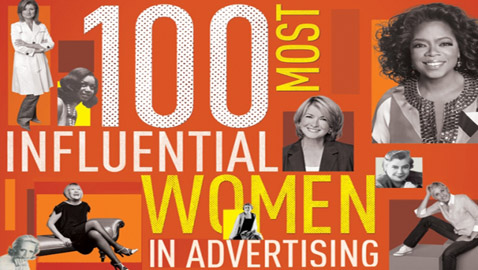Ad Age Honors The 100 Most Influential Women in Advertising
Post Views 3
Ad Age’s first cover on January 11, 1930, had a woman Sr. Louise Stanley on its cover. She was the then chief of the bureau of home economics of the Department of Agriculture and it covered her speech she delivered to the Union League Club.
Sr. Stanley was the first of the many women that Ad Age has put on its cover in its eight decades of existence making them particularly competent to compile such a list. That the issue is being brought during the centenary celebrations of the Advertising Women of New York, an organization that supports women in the industry, adds more significance to the list.
Judann Pollack, the executive editor of Ad Age acknowledge that it required a concentrated effort, that saw them not only perusing their own back issues and delving into archives but also drawing upon numerous outside sources. Moreover reporters were also asked to provide information and an online request from readers asking them to nominate their choices for the list, elicited 400 responses.
The list includes such illustrious names as Peggy Charren, who championed the cause of eliminating commercial abuses in children’s television, celebrated talk-host and global icon Oprah Winfrey, Marissa Mayer, chief executive and president of Yahoo and the youngest CEO of a Fortune 500 company and Mary Wells Lawrence, founding president of Wells Rich Greene, an advertising agency known for its resourcefulness and pioneering work. She was also the first woman CEO of any company listed on the New York Stock exchange.
The magazine confirms that the list was not easy to compile and more than who to include it was more difficult to decide who to leave out and the list could easily have included more names of those women who have contributed to the industry’s history and strength. The list is likely to spawn animated discussions on those who have been chosen and should not have been, and those who did not deserve to be omitted.
Ms. Pollack acknowledged that the list was not definite. There could easily have been more names, “any number of deserving women who have also contributed to the history and vitality of this industry,” she wrote in an editorial. Moreover she said that at the Advertising Age, along with advertising, they also cover media and marketing and hence the list is representative of all these three areas.
The list consists of some of the most dominant and revolutionary creative thinkers and doers, over a wide ranging spectrum of advertising and related activities. Their work has changed the creative landscape in advertising, broadening its horizons and making it a much more stimulating, enjoyable, concerned, innovative and much more diverse and better place. Their contributions are lasting and laudable.
Women have come a long way since the times when women were finding their way in corporate culture and were discriminated against in hiring 5 decades ago, to taking center stage and commanding as much admiration, respect and deference. The list is a salutation to those who paved the way for the advertising women of today.
Ad Age Honors The 100 Most Influential Women in Advertising by Harrison Barnes

